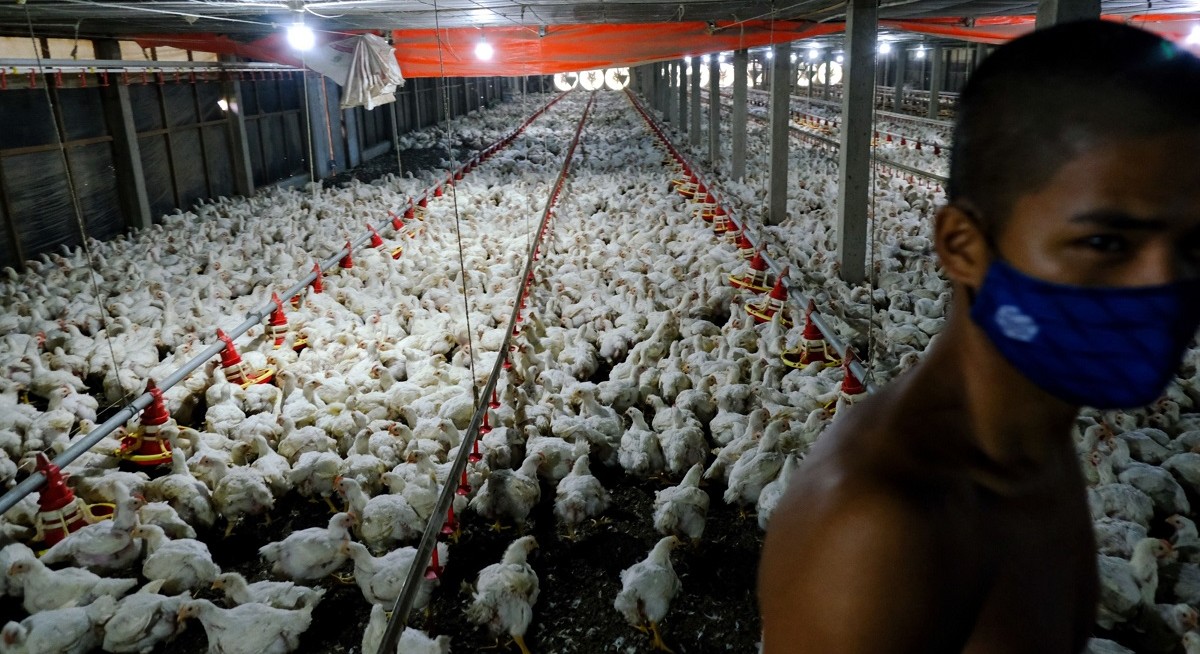The soaring costs of grains, palm oil and chicken are forcing equity investors to rethink their positions as supply disruptions reshape the earnings outlook for companies. Profit estimates of global exporters like Singapore-listed Wilmar International and Hong Kong’s WH Group are on the rise while popular doughnut chain Krispy Kreme may take a hit from rising wheat prices.
“Producers in economies that resist the temptation of export restrictions gain pricing power in global markets,” said Frederic Neumann, co-head of global research Asia at HSBC Holdings. “Agricultural producers from advanced economies like Australia, Canada or the US are less likely to face outright export restrictions, giving them a leg up over competitors from markets with more interventionist policies.”
Here are some of the biggest winners and losers from food protectionist measures:
See also: Adani’s giant copper smelter caught up in global ore shortage
Wheat
Benchmark wheat futures have surged about 50% this year, due to Russia’s invasion of Ukraine, bad weather and export curbs by India and Kazakhstan. This has helped drive a 17% gain in the shares of Australian food ingredient trader GrainCorp, versus a 15% drop in MSCI Inc.’s global equity gauge.
Meanwhile, firms using the commodity as an ingredient such as Japan’s noodle maker Nissin Foods Holdings Co. and India’s bread and biscuit manufacturer Britannia Industries Ltd. look vulnerable.
See also: Lynas warns of rare earths disruption due to Australian power cuts
In the US, Truist Securities analyst William Chappell lists Krispy Kreme, alcoholic-beverage company MGP Ingredients Inc. and packaged-food firm Flowers Foods Inc. as some of the companies under his coverage with the biggest exposure to wheat prices.
Meanwhile, firms using the commodity as an ingredient such as Japan’s noodle maker Nissin Foods Holdings Co. and India’s bread and biscuit manufacturer Britannia Industries Ltd. look vulnerable.
In the US, Truist Securities analyst William Chappell lists Krispy Kreme, alcoholic-beverage company MGP Ingredients and packaged-food firm Flowers Foods as some of the companies under his coverage with the biggest exposure to wheat prices.
Sugar
India’s move to restrict sugar exports to safeguard its own food supplies fueled declines in shares of domestic sweetener makers, while companies in China and Thailand got a boost. An export halt may lead to higher global prices given that India is the world’s biggest sugar exporter after Brazil.
Wilmar-backed Shree Renuka Sugars is down more than 8% since the measure was announced while China’s Cofco Sugar Holding and Thailand’s Khon Kaen Sugar Industry Pcl. have risen at least 1% each.
Palm Oil
Jakarta’s flip flop over palm-oil exports – it banned exports in April, lifted it three weeks later and reimposed a domestic sales quota – will help Malaysia-listed planters with lower exposure to Indonesia such as Kuala Lumpur Kepong Bhd., said Bloomberg Intelligence analyst Alvin Tai.
Meanwhile, top agricultural traders including Wilmar as well as US-listed Archer-Daniels-Midland and Bunge tend to benefit when there are price dislocations and uncertainty in the market, said Tellimer analyst Nirgunan Tiruchelvam.
To stay ahead of Singapore and the region’s corporate and economic trends, click here for Latest Section
Meat
Thailand – a major shipper of chickens as well as sugar – may benefit after Malaysia said it will halt exports of 3.6 million chickens a month from June 1.
Charoen Pokphand Foods, a Thai meat producer owned by the billionaire Chearavanont family, will gain from the recovery in post-pandemic consumption, RHB Research Institute analysts including Soong Wei Siang wrote in a note. The company’s shares are up about 8% this month.
“The interesting question is what consumers will switch to if prices for chicken remain high,” said Joachim Klement, head of strategy, accounting and sustainability at Liberum Capital. WH Group, the world’s biggest pork company, may stand to win from potentially higher demand as China’s hog prices remain subdued.
Smart Farming
Nokia Oyj, Qualcomm Inc and Garmin and other companies with technologies that link to tractors or even cows and plants, help detect what specific field areas need watering or cutting, allowing farmers to better navigate difficult conditions. There’s “a boom in smart farming right now,” said John Plassard, a director at Mirabaud & Cie.
Crop science companies like Syngenta Group, the Swiss seed and fertilizer business owned by ChemChina, may also help farmers whose fields have been hit by climate change to boost their cultures, he added.
Fertilizers
Producers of fertilizers, seeds and chemicals stand to gain when there’s a shortage of food, said Mathieu Racheter, head of equity strategy at Julius Baer.
Russ Mould, investment director at AJ Bell, is watching to see if shares of Mosaic, CF Industries Holdings and K+S will retrace a drop should food prices remain high.
Food Service Distributors
Other beneficiaries of rising commodity costs are food-distribution stocks such as Sysco Corp, US Foods Holding Corp and Performance Food Group which provide food and kitchen supplies to restaurants, hospitals, hotels and schools.
Berenberg recently initiated coverage of the latter two stocks with buy recommendations, saying the pricing methods used by food service distributors effectively pass on all or most food inflation to operators. All three stocks have outperformed the S&P 500 Index this year.
Overall, some investors expect the environment of lofty prices and scarce supplies to persist for now.
“It sounds like this could go on for quite a while,” said Nicole Kornitzer, portfolio manager of the Buffalo International Fund. “With rising prices and food shortages leading to more protectionism, the protectionism only causes further supply imbalances and shortages, which leads to even more price increases.”




